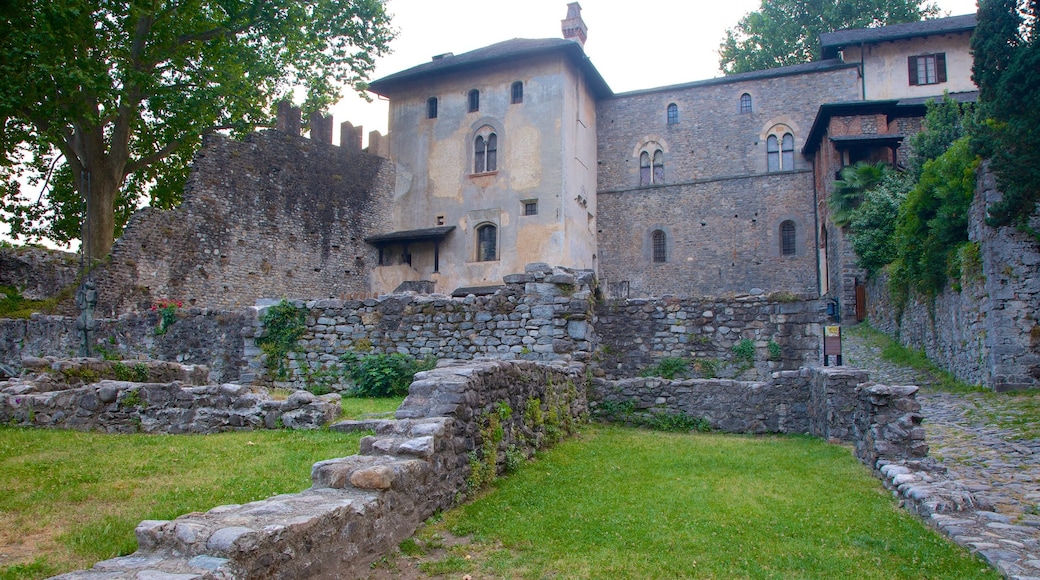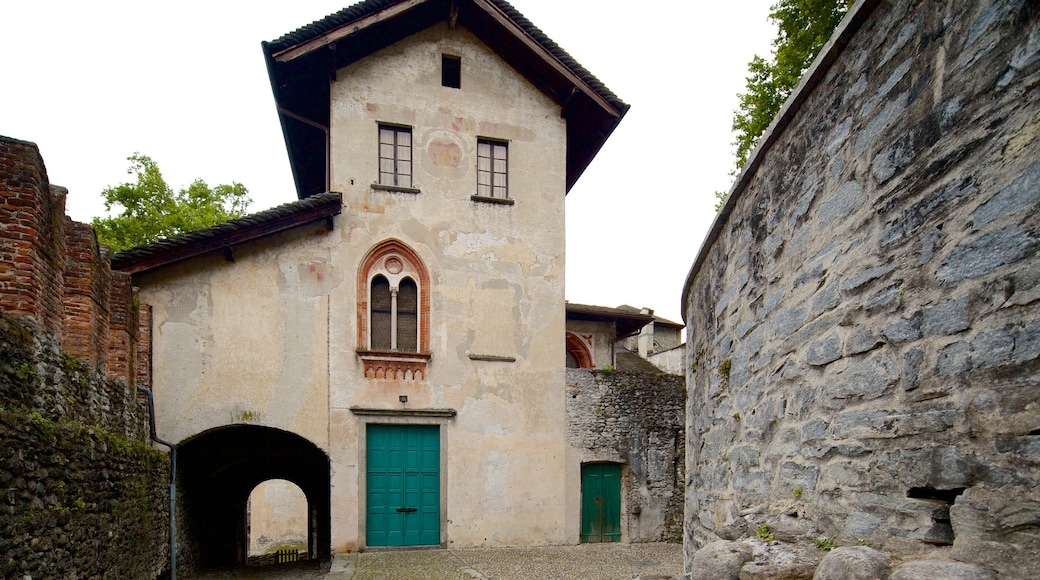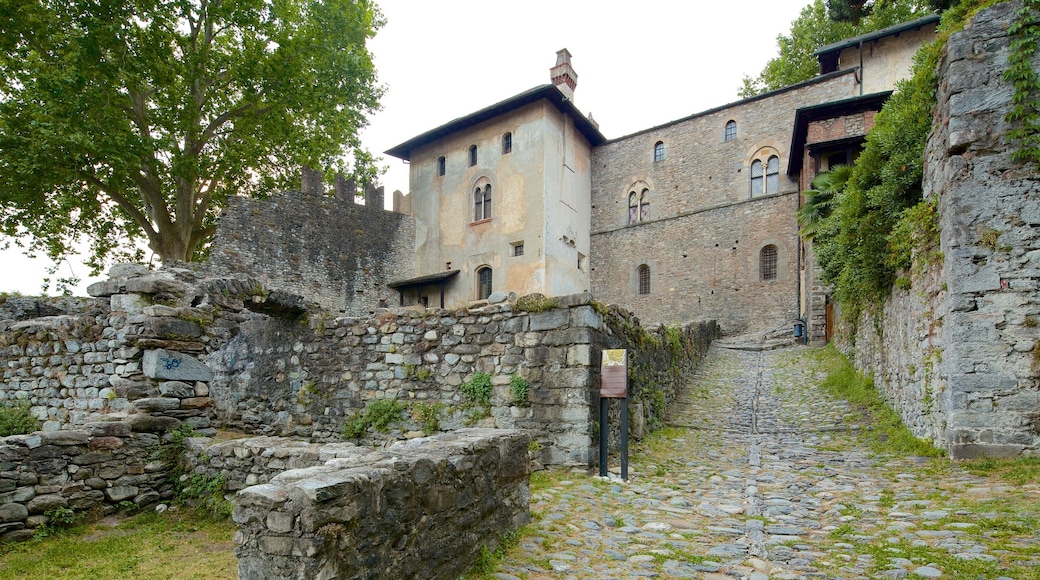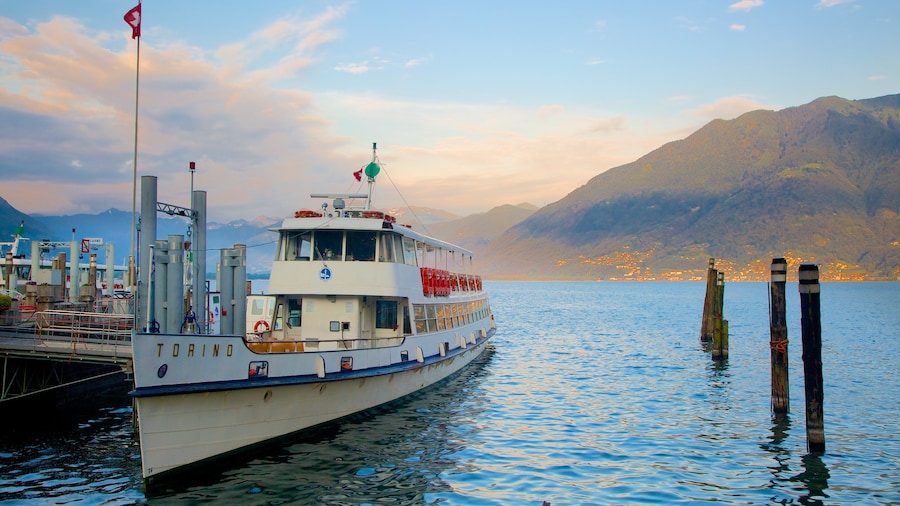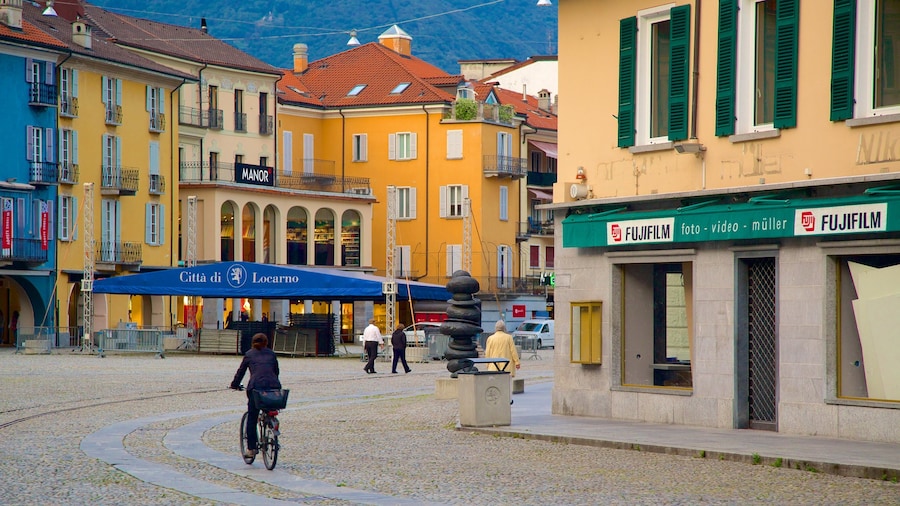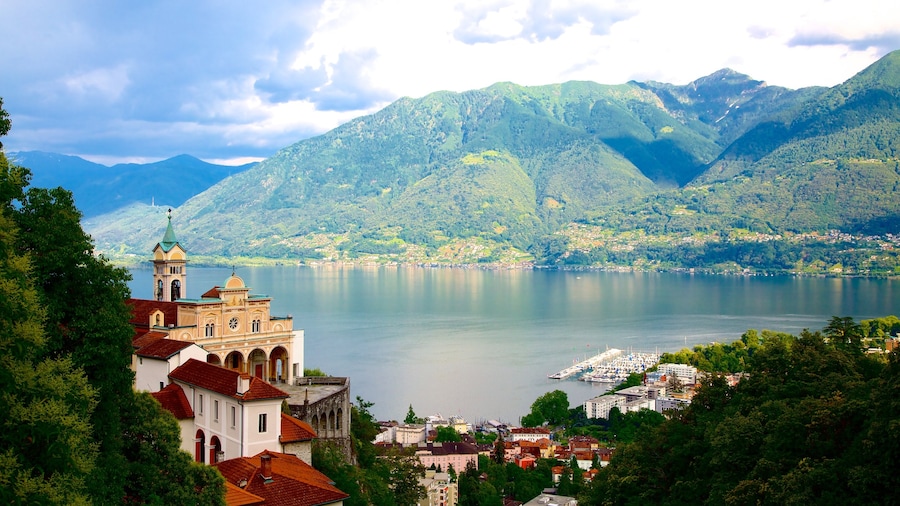Guarding the edge of Locarno’s old town, the medieval Visconti Castle (Castello Visconteo) is a defensive structure that once housed the powerful Visconti family from Milan. Venture inside to see ancient Roman vases and explore the adjacent bastion and palace.
Archaeologists and historians are still investigating whether the complex was designed by Leonardo da Vinci, as experts suggested in 2004. This isn’t an easy task, because following the near complete destruction by the Ghibellines in 1260, the castle was almost entirely rebuilt. In 1342 the Visconti of Milan besieged the stronghold from all sides and captured it. To prevent new enemy attacks from Lago Verbàno, also named Lago Maggiore, the castle has a bastion known as the “Rivellino.”
The towering wall you see today dates back to 1507 however, the rest was demolished by Swiss confederate forces in 1532. Since acquiring the property in 1921, the town of Locarno has repaired the ruined castle and transformed it into the Museo Civico e Archeologico (Municipal and Archeological Museum).
Inside the museum, browse artifacts and documentation from the late Bronze Age to the Roman era. The 200 or so items, which were all excavated in the canton of Ticino, are placed in chronological order. Browse the two rooms with Roman glasses, vases and blown-glass goblets. Also don’t miss the collection of Apulian vases from the Bronze Age, which were donated to the town of Locarno by Carlo Rossi.
Find documents on the Locarno Peace Pact in 1925 in the municipal section of the museum. While here, look for the precious Nymphenburg porcelain and costumes from the 18th century.
The nearby 16th-century Palazzo Casorella is also part of the castle complex.
Castello Visconteo, in Locarno’s Piazza Castello, is a 15-minute walk from the train station. If you come by car, park in the multi-level car park off the square’s traffic circle. The museum is open from April to October, Tuesday to Sunday, but is closed for 2 hours around lunch time. An entry fee applies.
